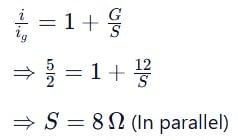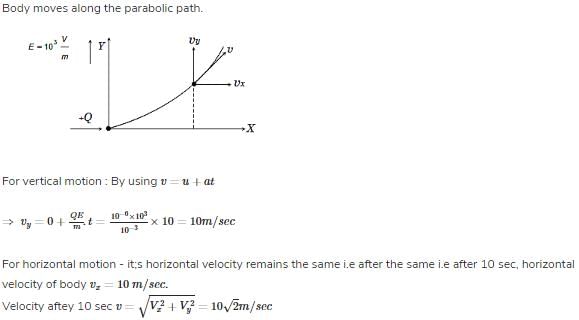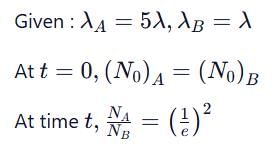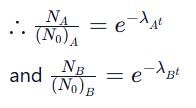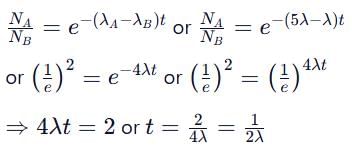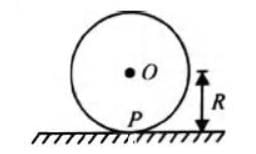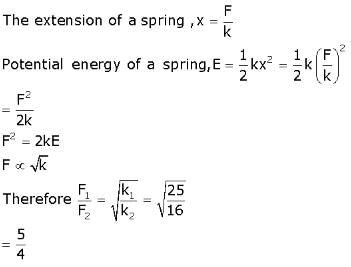WBJEE Physics Test - 1 - JEE MCQ
30 Questions MCQ Test - WBJEE Physics Test - 1
Energy, when one milligram mass is converted in to energy (in joules ) is
An ammeter with internal resistance 90Ω reads 1.85 A when connected in a circuit containing a battery and two resistors 700Ω and 410Ω in series. Actual current will be
An ammeter gives full deflection when a current of 2 amp. flows through it. The resistance of ammeter is 12 ohms. If the same ammeter is to be used for measuring a maximum current of 5 amp., then the ammeter must be connected with a resistance of
Two similar wires under the same load yield elongation of 0.1 mm and 0.05 mm respectively. If the area of cross-section of the first wire is 4 mm2, then the area of cross section of the second wire is
The mutual inductance of an induction coil is 5 H. In the primary coil, the current reduces from 5 A to zero in 10-3s. What is the induced emf in the secondary coil ?
There is a uniform electric field of strength 103 V m−1 along Y-axis. A body of mass 1 gm and charge 10− 6C is projected into the field from orgin along the positive X-axis with a velocity of 10 m s − 1 . Its speed in m s−1 after 10s is (Neglect graviation )
Which of the following quantities does not depend upon the orbital radius of the satellite
The centripetal acceleration of a body moving in a circle of radius 100 cm with a time period of 2s will be
A capacitor of capacity C1 is charged upto V volt and then connected to an unchanged capacitor of capacity C2. The potential difference across each capacitor will be
The coil of a moving coil galvanometer is wound over a metal frame in order to
If a bar magnet of moment μ is suspended in a uniform magnetic field B and it is given an angular deflection ' θ ' w.r.t its equilibrium position, the restoring torque on magnet is
Two mercury drops with radii in the ratio of 3 : 4 fall from a great height through the viscous liquid. The ratio of their terminal velocities is
The x and y coordinates of a particle at any time t are by x=7t+4t2 and y=5t, where x and y are in metre and t in seconds. The acceleration of particle at t=5 s is
A bullet is fired from a gun with a velocity of 1000 m−s-1 in order to hit a target 100 m away. At what height above the target should the gun be aimed? (Resistance of air is negligible and g = 10 m−s⁻2)
Two radioactive substances A and B have decay constants 5 λ and λ respectively. At t = 0 they have the same number of nuclei. The ratio of number of nuclei of A to those of B will be (1/e)2 after a time interval
The length of a simple pendulum is increased by 1%. Its time period will
One-fourth length of a spring of force constant K is cut away. The force constant of the remaining spring will be
A solid cylinder of mass M and radius R rolls on a flat surface. Its moment of inertia about the line of contact is
Which of the following spectrum has high to low frequency range?
A soild sphere, disc and solid cylinder all of the same mass and made of the same material are allowed to roll down (from rest) on an inclined plane, then
In forward biasing of junction diode, the width of depletion layer
Heat given to a body which rises its temperature by 1ºC is
The length and breadth of a metal sheet are 3.124 m and 3.002 m respectively. The area of this sheet up to four correct significant figures is
The vector lies in the plane of vectors
which of the following is correct ?
Two springs, having spring constants of 25 N-m⁻1 and 16 N-m⁻1are stretched by forces F₁ and F₂.If work done in stretching the springs is equal, then the ratio of the forces F₁ and F₂ is
An unknown resistance X is connected in the left gap and a known resistance R in the right gap of a meter bridge. The balance point is obtained at 55 cm from the left end of the wire. When R is increased by 5 Ω , the balance point shifts by 5 cm. The value of X is



